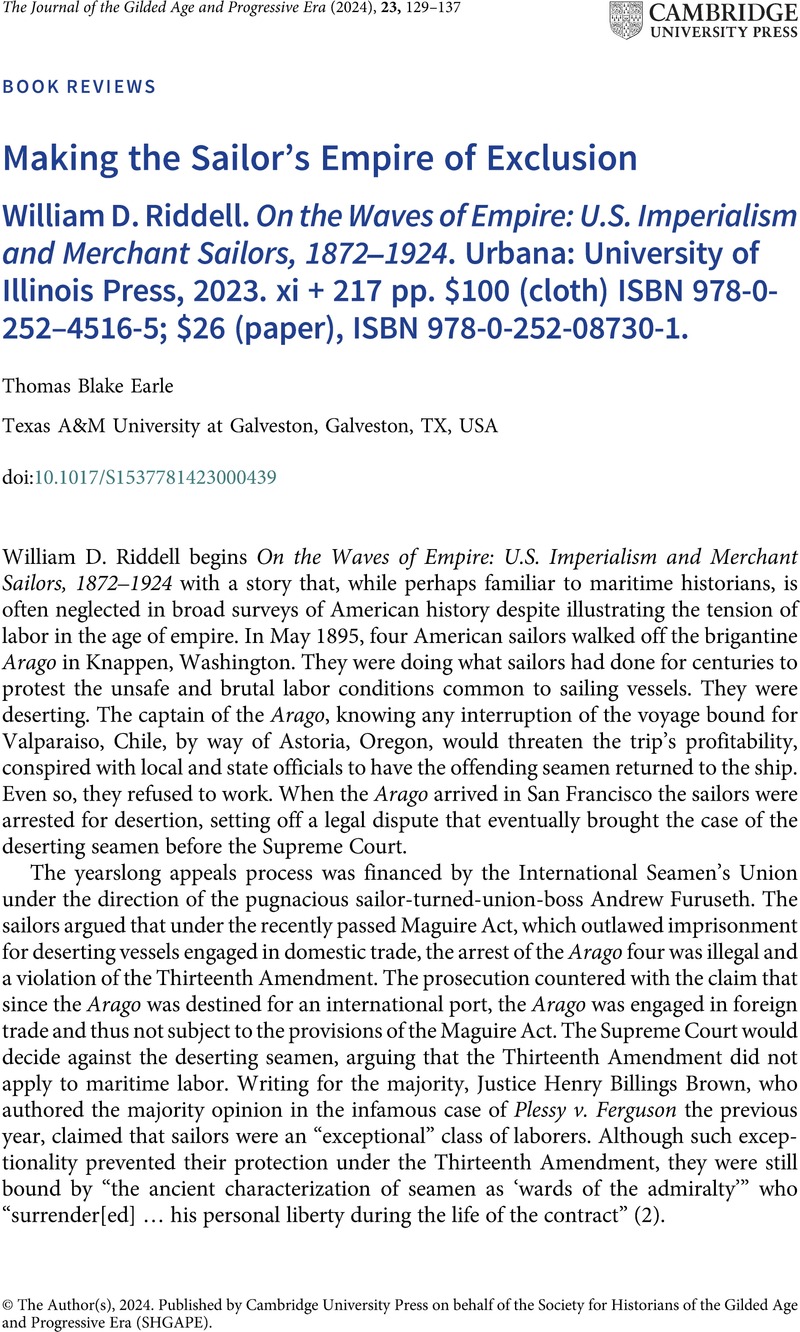No CrossRef data available.
Article contents
Making the Sailor’s Empire of Exclusion - Riddell William D.. On the Waves of Empire: U.S. Imperialism and Merchant Sailors, 1872–1924. Urbana: University of Illinois Press, 2023. xi + 217 pp. $100 (cloth) ISBN 978-0-252--4516-5; $26 (paper), ISBN 978-0-252-08730-1.
Review products
Riddell William D.. On the Waves of Empire: U.S. Imperialism and Merchant Sailors, 1872–1924. Urbana: University of Illinois Press, 2023. xi + 217 pp. $100 (cloth) ISBN 978-0-252--4516-5; $26 (paper), ISBN 978-0-252-08730-1.
Published online by Cambridge University Press: 16 April 2024
Abstract
An abstract is not available for this content so a preview has been provided. Please use the Get access link above for information on how to access this content.

- Type
- Book Reviews
- Information
- The Journal of the Gilded Age and Progressive Era , Volume 23 , Special Issue 1: Special Issue: Literary Studies and the Gilded Age and Progressive Era , January 2024 , pp. 129 - 131
- Copyright
- © The Author(s), 2024. Published by Cambridge University Press on behalf of the Society for Historians of the Gilded Age and Progressive Era (SHGAPE)


